
Annual Forbs Around Las Vegas, Vegetation Around Las Vegas
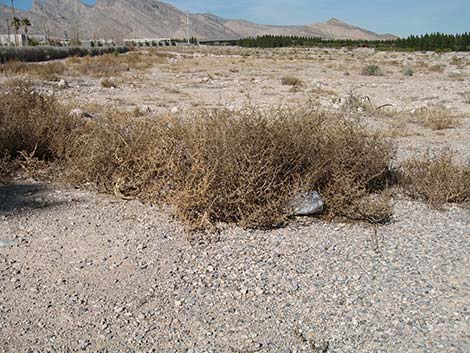 |
General: Prickly Russian Thistle (Salsola tragus) is an invasive weed that does well on disturbed soils. When dried out and rolling across the ground on a windy day, everyone recognizes tumbleweeds. When green, the plant grows long, upward and outward stretching stems that curl up into a large ball or basket (3 to 4 ft diameter) as they dry out. The main stem breaks free from the root when the seeds are ripe, allowing the plant to blow and tumble across the landscape. The non-native species does poorly in competition with native species on undisturbed soils. Prickly Russian Thistle is a common component of vegetation communities on disturbed soils throughout lower-elevation urban and desert areas in the Lower Sonoran (Creosote-Bursage Flats) and Upper Sonoran (Mojave Desert Scrub and Pinyon-Juniper Woodland) life zones. The species can also be found into the Transition (Yellow Pine Forest) and Canadian (Pine-Fir Forest) life zones to about 8,500 feet elevation in disturbed areas. Family: Goosefoot (Chenopodiaceae). Other Names: Tumbleweed |
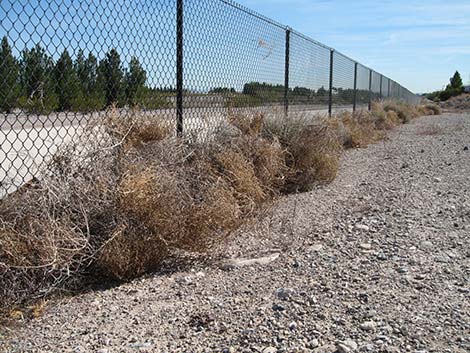 |
Plant Form: Annual forb that grows long, outward stretching stems that curl up into a large ball or basket (3 to 4 ft diameter) as they dry out. Height: About 3 to 4 ft. Stems: Main stem at base to about 1/2 inch diameter. Branches many, thin. Stem green with red or purple stripes when young, aging to yellowish. Stem breaks free when seeds are ripe. Leaves: Blades 1/3 to 4 inches, thread-like, becoming sharp pointed. Flowers: Blooms summer through fall. Flower inconspicuous, in leaf axils; look like saucers with pinkish center. Seeds: Hard and well protected with 3 stout spines. Stem breaks free when seeds are ripe and the stems are curled into a loose ball; wind-blown balls spread seeds across the landscape. |
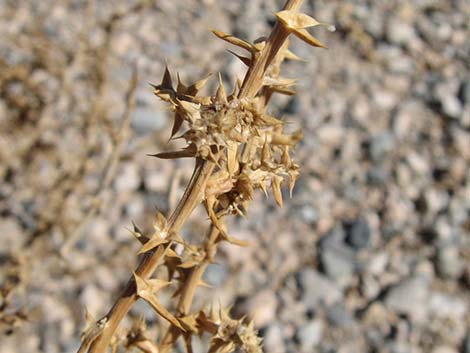 |
Habitat: Dry, well-drained sandy, gravelly, and rocky soils on upper bajadas and moderate slopes in the lower mountains. Elevation: Below sea level to about 8,500 ft, but usually found in lower-elevation areas. Distribution: Widespread throughout North America; native to Eurasia. Comments: Called tumbleweeds because the mature plants blow on the wind to disperse seeds. A similar species, Russian Thistle (Salsola kali) occurs in California, Arizona, and several east coast states. |
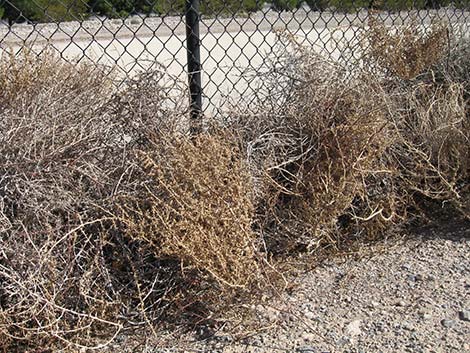 |
 |
 |
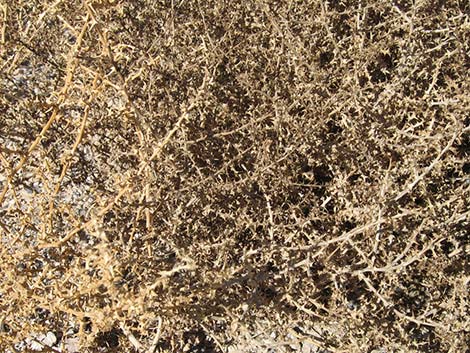 |
 Spiny stems |
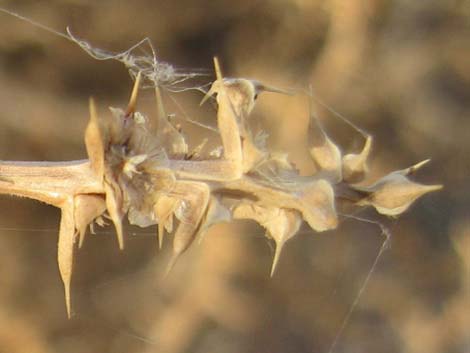 Spiny stem and seeds |
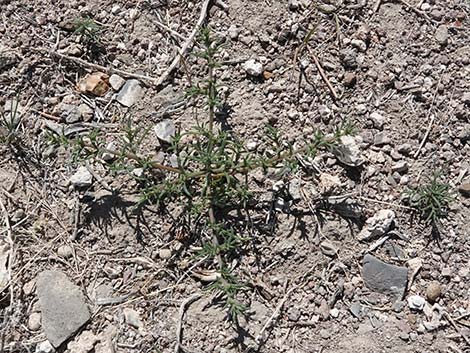 Initial stems on sprouts often form an X |
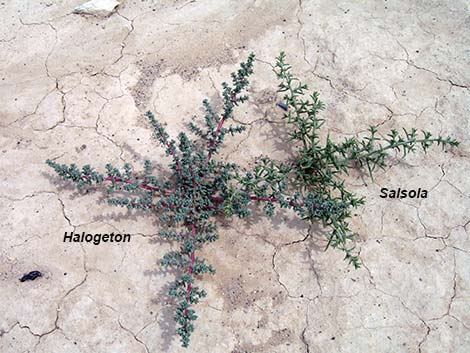 Initial stems on sprouts often form an X, but so does Halogeton |
 |
 |
 Green stems and fresh flowers (note stamens) |
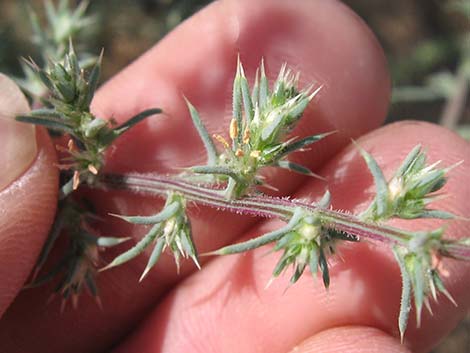 Green stems and fresh flowers (note stamens) |
 Fresh flowers (note stamens) |
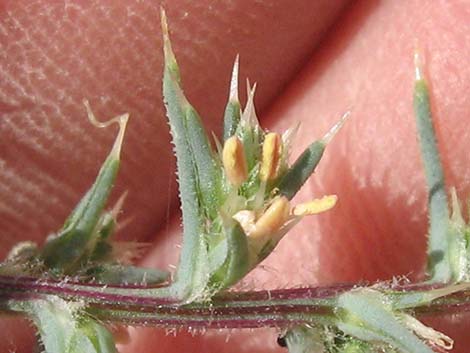 Fresh flowers (note stamens) |
 |
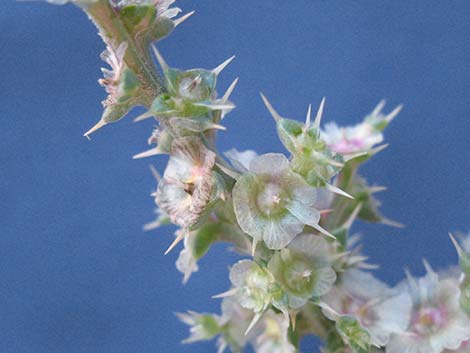 |
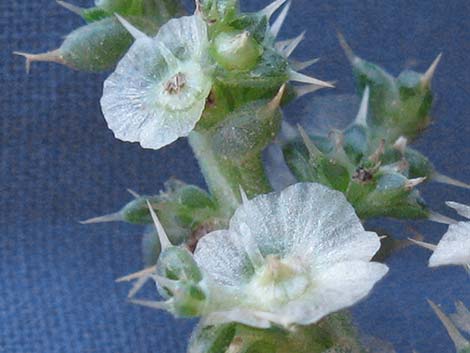 |
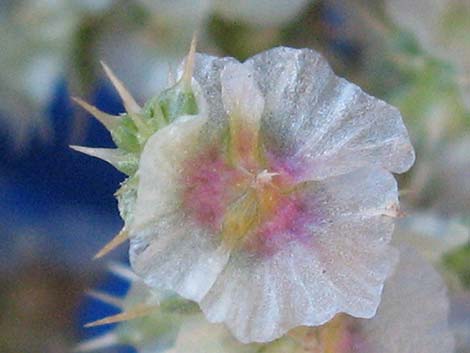 |
Note: All distances, elevations, and other facts are approximate. Names generally follow the USDA database.
![]() ; Last updated 211224
; Last updated 211224
| All Annual Forbs | Plant Species Index | Glossary | Copyright, Conditions, Disclaimer | Home |